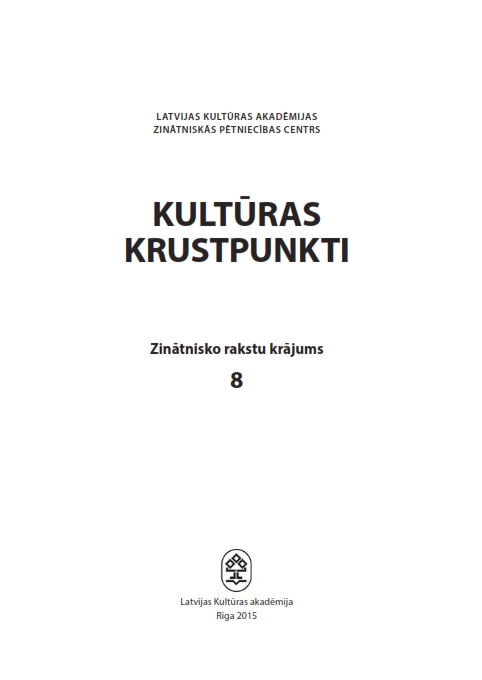LITERĀR “TRAUKSMES” GRUPA UN KONSTRUKTĪVISMS
THE LITERARY GROUP “TRAUKSME” (“ALERT”) AND CONSTRUCTIVISM
Author(s): Ieva KalniņaSubject(s): Cultural history, Poetry, Latvian Literature, Interwar Period (1920 - 1939), Theory of Literature
Published by: Latvijas Kultūras akadēmija
Keywords: constructivism; Latvian literature in 1920s and 1930s; literary group; constructivism in poetry;
Summary/Abstract: A number of literary groups existed in Latvian literature at the turn of the 1920s and 1930s. The literary groups had at least two of the following elements: literary manifestos or programmatic articles, media publications, and a definite circle of authors. The defender of the leftist ideas in the political and aesthetic respect was the literary group “Trauksme” (“Alert”). The magazine was irregularly published from November 1928 until January 1931; however, the group actively existed until May 1930. The editorial board of the magazine consisted of Pēteris Ķikuts, Jānis Grots, and Jānis Plaudis. In the first issue of the magazine they published a programmatic article “We Exist”. In this article it was aggressively declared what the members of the group were for or against. They were in favour of the social function of literature. The most important theoreticians of the group were Pēteris Ķikuts, who stressed the affiliation of the group with constructivism, and Jānis Plaudis, who examined the issue of the present. The poetry of the “Trauksme” group members was characterised by an opposi tion of criticism and utopia. They took over the sharp contrasts of expressionism; however, they made these contrasts socially and sometimes also politically concrete. In order to reveal a new reality, the group “Trauksme” chose to depict the city. The authors turned to suburbs and port areas, factories and working-class dwellings. The favourite images of their poetry were the beggars and the poor. Their utopian ideas were connected with the ideas of industrialisation of the world, a working-class state and the East as a space for the birth of a new and creative culture. The members of the group made the East concrete by the concept of China and the socially lowest classes of its society.
Journal: Culture Crossroads
- Issue Year: 8/2015
- Issue No: 2
- Page Range: 235-245
- Page Count: 11
- Language: Latvian

